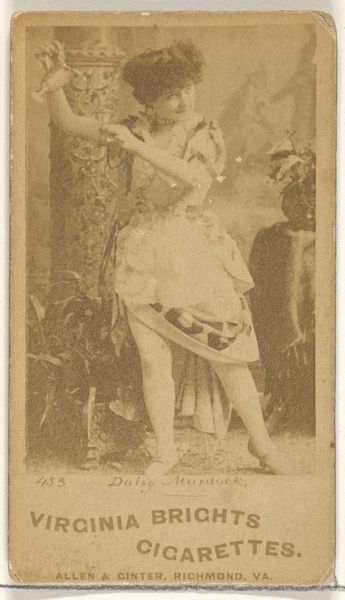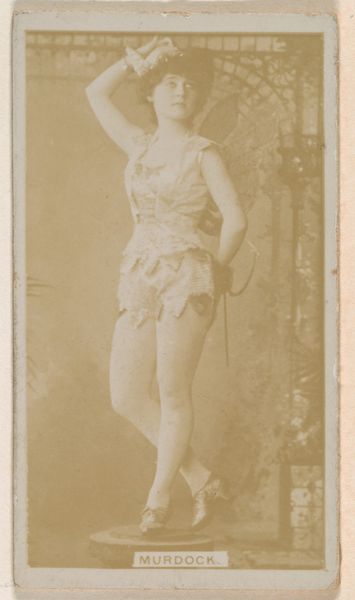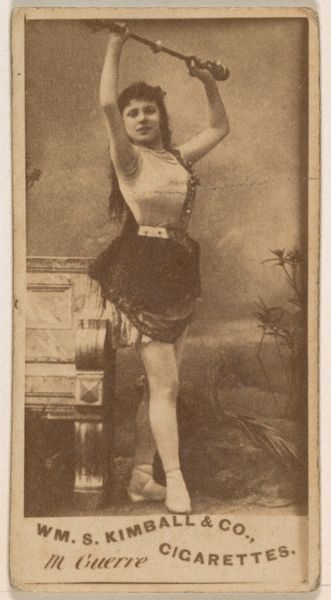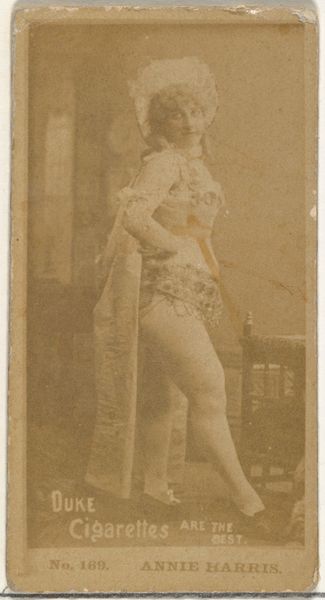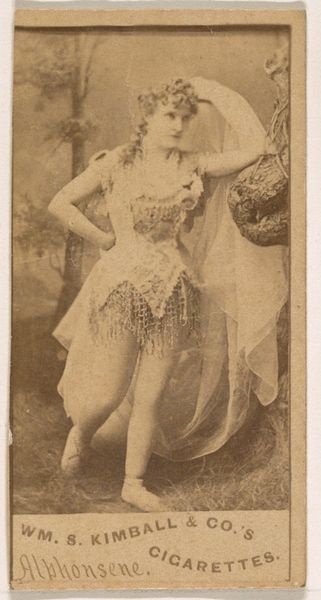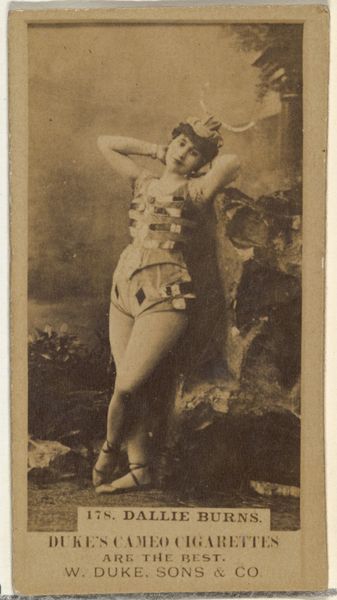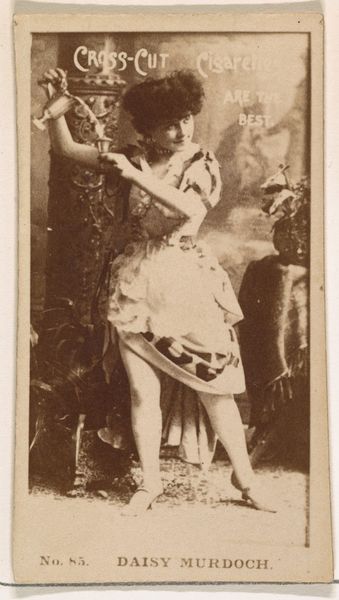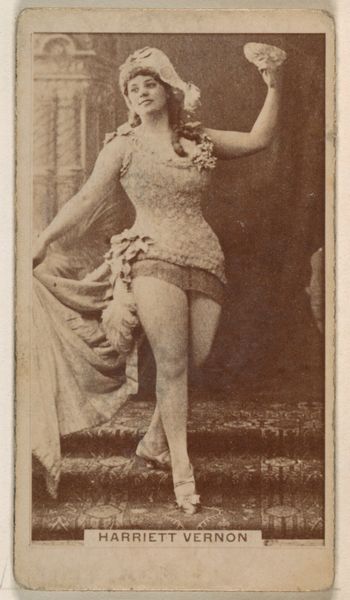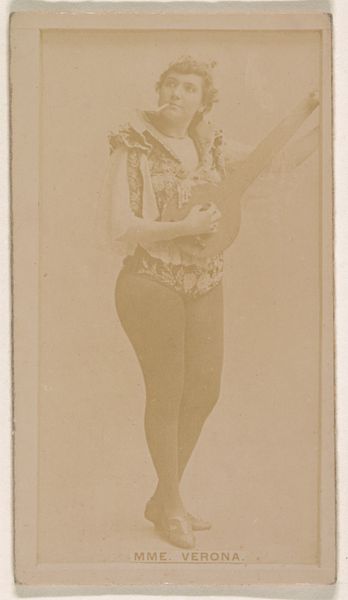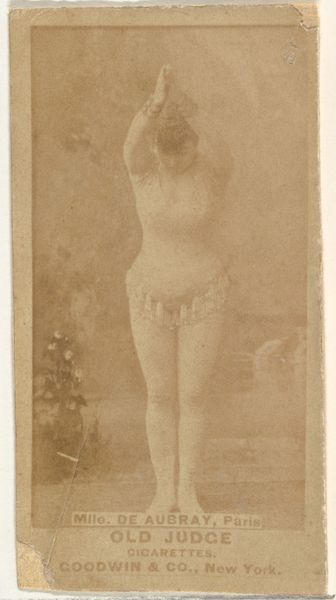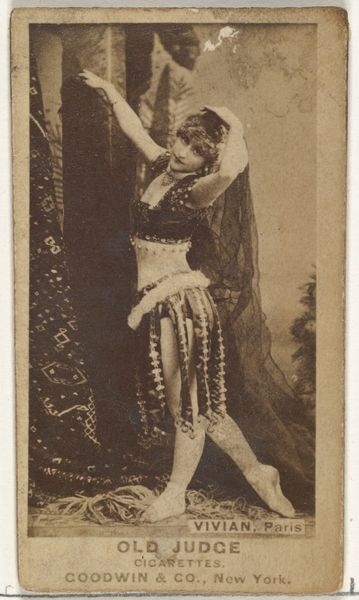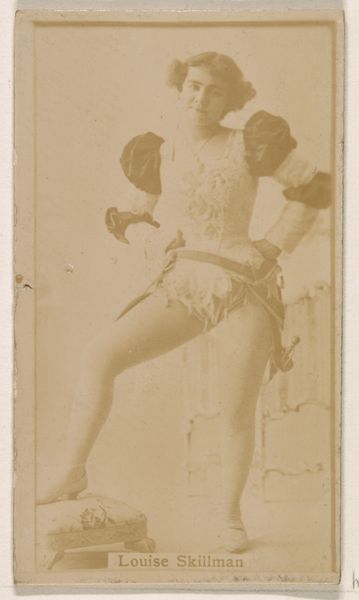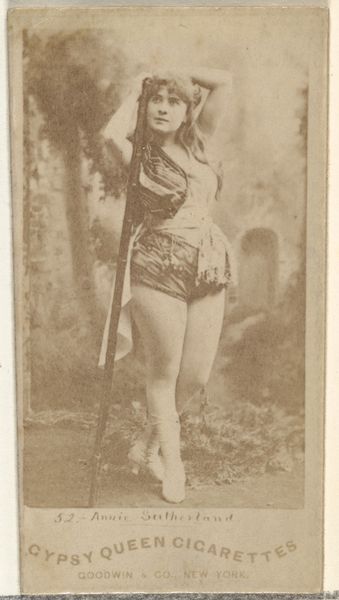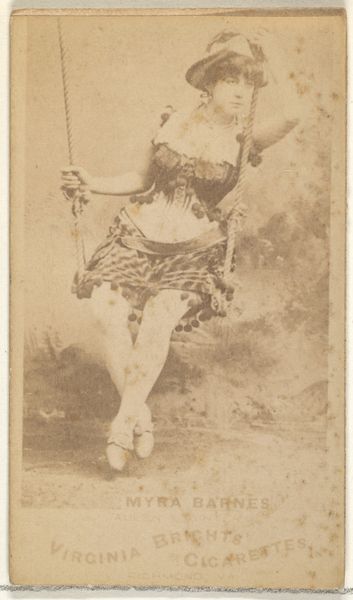
Mlle. Gratien, Paris, from the Actors and Actresses series (N171) for Old Judge Cigarettes 1886 - 1890
0:00
0:00
drawing, print, photography
#
portrait
#
drawing
# print
#
figuration
#
photography
Dimensions: sheet: 2 11/16 x 1 3/8 in. (6.9 x 3.5 cm)
Copyright: Public Domain
Editor: Here we have "Mlle. Gratien, Paris," a photographic print from the Actors and Actresses series by Goodwin & Company, dating from 1886 to 1890. The print is small, sepia-toned, and presents the actress in a theatrical pose. It's striking how it was used as a cigarette card. What can you tell me about this image in terms of its social context? Curator: This image, and the series it belongs to, offers a glimpse into the commodification of celebrity and the burgeoning advertising industry in the late 19th century. Cigarette cards functioned as miniature billboards, and their depiction of actresses highlights how female performers became objects of desire and consumption. It's important to consider how these images shaped perceptions of women and entertainment at a time when their roles in society were hotly debated. Editor: So, it’s not just about entertainment, but also about controlling the image of women? Curator: Exactly. The male gaze is powerful here, reinforced by the capitalist drive of the tobacco company. The “Old Judge” brand using an actress like Mlle. Gratien wasn’t merely about selling cigarettes; it was about selling a specific lifestyle, aspiration, and ideal of femininity to their male consumers. Do you notice any signs of class or race within the image that give clues about those ideals? Editor: The staging seems carefully constructed, indicating a certain level of affluence or a deliberate attempt to project that image. I'd say that Gratien presents as white, too. Curator: And how does that positioning relate to labor? What does this glamorous performance of femininity distract from or conceal about the realities of work at the time? Editor: I guess it romanticizes the labor involved in performance and the economic inequalities of the time. It's selling a dream. Curator: Precisely. By examining this photograph through the lens of feminist and cultural theory, we uncover layers of meaning that reveal the complex interplay between commerce, gender, and representation in the 19th century. It encourages us to think about agency, objectification, and who gets to control the narrative. Editor: That gives me so much more to think about. I would've missed all of that without understanding the background. Thank you. Curator: My pleasure. It is so rewarding when we collectively re-evaluate how media has portrayed different identities and lifestyles.
Comments
No comments
Be the first to comment and join the conversation on the ultimate creative platform.
